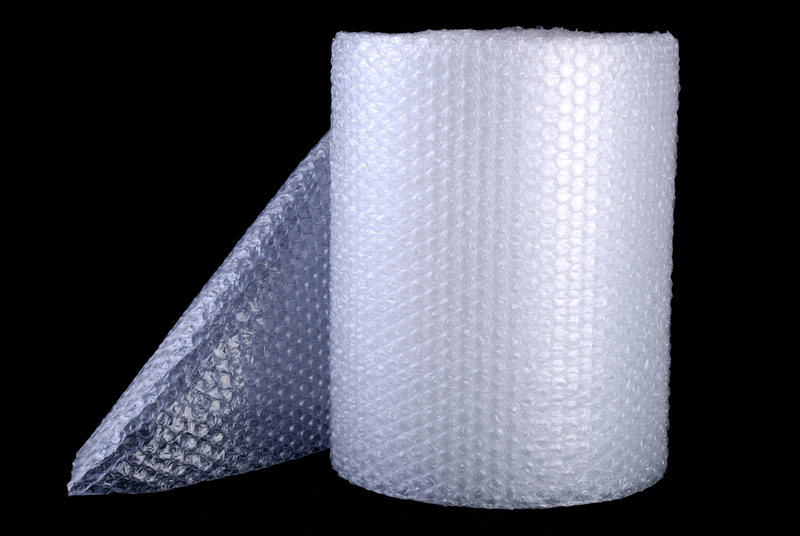The Intricacies of Piano Moving and Why Leaving it to Professionals is Best
Posted on 11/06/2025
The Intricacies of Piano Moving and Why Leaving it to Professionals is Best
Pianos are not just musical instruments; they are intricate masterpieces of precision engineering, emotion, and artistry. Moving one, whether it's a majestic grand or a compact upright, is a task that demands skill, experience, and careful planning. This article dives deep into the complexities of piano moving and explains why enlisting expert piano movers is the smartest choice to protect your cherished instrument.
Understanding the Complexity of Piano Moving
The idea of relocating a piano may seem straightforward at first glance. However, pianos are among the most challenging household items to move because of their:
- Weight and size: Pianos can weigh anywhere from 300 to 1,400 pounds and are unwieldy due to their shape.
- Delicate internal components: With up to 10,000 moving parts, a piano's mechanism is highly sensitive to jolts and tilts.
- High value: Both financially and sentimentally, pianos often represent a significant investment.
Given these factors, improper handling poses serious risks of physical damage to the instrument and injury to the people attempting to move it.
Different Types of Pianos: Each with Unique Challenges
- Upright pianos: Ewight ranges between 300-500 pounds. These are more compact but still extremely bulky and awkward to maneuver through narrow spaces.
- Baby grand and grand pianos: Weighing up to 1,400 pounds, their disproportionate shapes and fragile legs make them highly susceptible to damage.
- Digital pianos: While lighter, they still require proper care to prevent damage to valuable circuitry.

The Hidden Dangers of DIY Piano Moving
Many people underestimate the risks involved in attempting a do-it-yourself piano relocation. Without specialized equipment, preparation, and expertise, the dangers are substantial.
Potential Hazards to the Instrument
- Internal damage: Pianos are tuned to exacting standards. Dropping or mishandling can disrupt the mechanism, causing costly and sometimes irreversible harm.
- Cosmetic flaws: Chips, scratches, or gouges in the polished wood can dramatically reduce the instrument's value and appearance.
- Frame damage: The cast iron frame or wooden structure can crack under unnatural strain, ruining the piano's sound quality.
Risks to People and Property
- Personal injury: The sheer weight and awkward center of gravity make pianos liable to tip, crush toes, injure backs, or cause falls.
- Damage to home: Walls, stairwells, floors, and door frames can be easily damaged if a piano isn't moved with precision.
These risks make it clear that piano moving is not a weekend project--it is a task that demands experience and preparation.
Why Professional Piano Movers Are the Best Choice
Professional piano moving companies offer a level of expertise and care that is difficult--if not impossible--for amateurs to match. Here's why:
Specialized Equipment for Piano Moving
- Piano dollies and skid boards: These devices are specifically designed to support the instrument evenly and prevent damage during transit.
- Protective padding: Movers utilize heavy-duty blankets and specialized straps to shield the piano and surrounding property.
- Custom crating: For long-distance moves or upright-to-grand conversions, piano movers may create custom crates to ensure maximum protection.
Expert Teamwork and Planning
- Pre-move assessment: Professionals survey the space and chart the optimal path, identifying potential obstacles like stairs, narrow hallways, or tight corners.
- Coordinated lifting: Teams utilize well-practiced techniques to lift, tilt, and maneuver the instrument safely.
- Loading and securing: Pianos are carefully loaded onto trucks and secured to prevent shifting during transit.
Insurance and Peace of Mind
- Comprehensive insurance: Reputable piano moving companies provide insurance that covers the instrument in case of accidents or damage, offering peace of mind that you simply can't get with a DIY approach.
- Accountability: Professionals stand behind their work, reducing stress and eliminating second-guessing.
How Professionals Handle the Piano Moving Process
Understanding how expert piano movers operate reveals just why their services are essential when relocating such a valuable object. Here are the typical stages of a professional piano move:
1. Pre-Move Consultation
A detailed consultation includes an assessment of the piano, the locations involved, and any obstacles that might be encountered. This forms the blueprint for a safe and efficient move.
2. Preparation and Dismantling
- Removing detachable parts: For grand pianos, legs, pedals, and lyres may be removed and wrapped separately.
- Padding and wrapping: The piano body is enclosed in protective blankets and securely wrapped to prevent surface scratches.
3. Moving and Maneuvering
- Strategically lifting and tilting: Teams utilize careful coordination to lift the instrument onto a dolly or skid board, ensuring perfect balance and control.
- Navigation: Professionals are trained to manage narrow doorways, tight corners, stairs, and elevators with precision.
4. Transportation and Delivery
- Climate-controlled transport: Because humidity and temperature fluctuations can damage a piano's delicate inner workings, specialized moving vehicles are used.
- Securing during transit: The piano is anchored within the truck to eliminate movement and vibration.
5. Reassembly and Placement
- Reattaching parts: Upon arrival, professionals carefully reassemble any detached components.
- Placement: The piano is positioned exactly where you want it, without any risk to the floors or walls.
6. Final Inspection
- Assessment for damage: A thorough check ensures the instrument arrived in perfect condition.
- Tuning advice: Since any move (no matter how careful) may affect tuning, professionals may recommend a follow-up tuning to restore optimal sound.
The Costs of Professional Piano Moving: Value Beyond the Price Tag
Some might balk at the cost of hiring professional piano movers, but it's essential to view this as an investment in the longevity of your valuable instrument. The expense pales in comparison to the potential cost of irreparable damage or painful injuries that can occur with amateur moving attempts.
Factors Affecting Piano Moving Prices
- Type and size of piano: Larger and heavier pianos require more labor and specialized equipment.
- Distance of the move: Local moves cost less, while long-distance or interstate relocations require more planning and resources.
- Site challenges: Stairs, narrow hallways, and tight spaces increase complexity and, consequently, cost.
- Additional services: Storage, crating, and post-move tuning may also add to the overall price.
Requesting a detailed quote from a reputable piano moving company is the best way to understand the value and protection built into the service.
Key Qualities to Seek in Professional Piano Moving Services
Given the importance of safeguarding your beloved instrument, it's crucial to pick the right experts for the job. Here's what to look for:
- Experience and reputation: Look for companies with a strong track record in successful piano moves.
- Specialized training: Movers should be specifically trained for piano relocation, not just general household moves.
- Proper licensing and insurance: Ensure that the company is fully insured and compliant with local regulations.
- Transparent process and communication: The best companies are upfront about costs, procedures, and timing.

Frequently Asked Questions About Piano Moving
How far in advance should I schedule a piano move?
Contact a moving company as soon as you know your moving date. This gives you the best chance of booking your preferred time slot and allows for plenty of planning.
Does my piano need to be tuned after moving?
Yes. Even with the most careful transport, moving a piano can cause subtle shifts. Professional movers often recommend a tuning a few weeks after relocation, once the instrument acclimates to its new environment.
Can all piano movers handle both uprights and grands?
Not all, but most reputable professional piano movers have the equipment and experience to move any type of piano. Always double-check before booking.
Conclusion: Leave Piano Moving to Professionals for Safety and Peace of Mind
Attempting to move a piano without the proper training, equipment, and experience is an invitation to disaster--which can mean permanent damage to a treasured instrument, costly repairs, or serious personal injury. Enlisting professional piano moving services brings not only technical expertise and specialized gear, but also peace of mind, knowing your piano will reach its new home safely and soundly.
For anyone who cherishes the investment, artistry, and joy that a piano represents, there is no substitute for hiring experienced professionals when it comes to moving. Your piano--and your back--will thank you!
Thinking of moving your piano?
Reach out to a trusted local piano moving company today and ensure your instrument receives the expert care it deserves. The art of piano moving is best left to the professionals!



